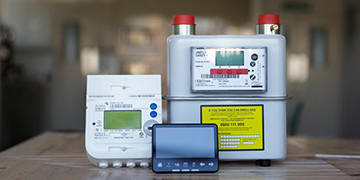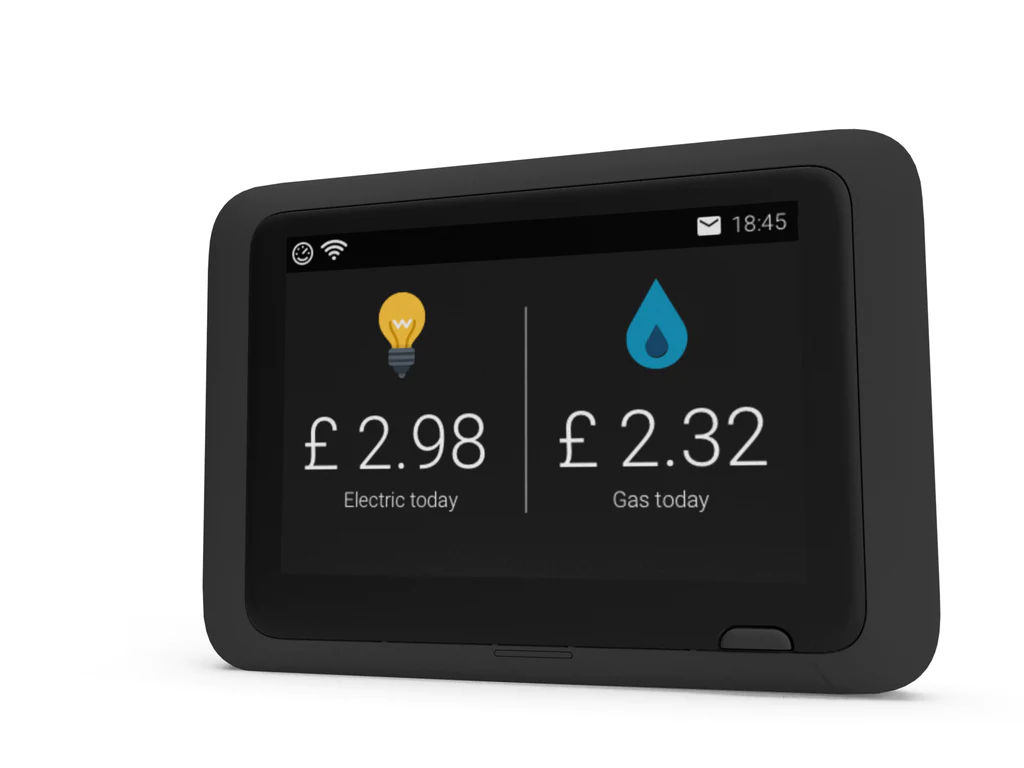Owning Our Own Data: Monitoring Our Smart Meters
We'll soon have smart electricity and gas meters. Let's monitor them locally through our home automation system, Home Assistant.

Why?
Warning: rant ahead.
I believe in “Own Our Own Data”. Or, as the maker of one smart phone that doesn't own you, Murena puts it, “My Data is My Data”.
What do I mean, why do I care?
Companies monitor and record and control all the data they can about us. They treat our data as if it's theirs. They prefer it this way round. I feel that's wrong, hurtful in the long term. I want to take a stand in owning my own data as a principle. I want to change the norm, do it the other way round. It's my data first, and I will share my data with any Company I deal with by negotiation, under my control.
The principle should be that, first and foremost, we record our own copy of our own data. From there, we should share it with each Company that has a legitimate interest in it. This sharing should be under our own terms and control. We should share the relevant parts of our data with each Company we deal with, as an obligation or a privilege to them depending on the relationship.
What data? All kinds of data related to me: the photos I take, the list of books I borrow from my local library, my instant messages with friends, my gas and electricity usage.
The companies I deal with are welcome to keep their own copy of data relevant to their service to me. What I do not accept is to be put in the position of Them holding the only copy of my data, and me having to beg them whenever I want to access my data.
Current laws deem that Companies must surrender our data to us if we reasonably ask for it. While that's the theory, however, in practice I have tried this a few times and the process ranges from the tedious to the impossible.
Protocol Theory: How Smart Meters Talk
Let's understand a bit about how smart meters talk... to each other, to the utility companies, and to our home automation system.
We're looking at SMETS2 meters, the current standard in the UK. These meters use two wireless interfaces, one within the home and another kind to communicate to the electricity companies. On the home area network (HAN) side, they use the Zigbee network protocol to connect the electricity meter with the battery powered gas meter and any in-home display units. Their wide area network (WAN) side connects to the UK's central smart metering hub, the “DCC”, and from there to the electricity and gas supply companies.
The home owner is not usually allowed direct access to either of those two wireless network connections. It is my understanding that the energy supply company could give the home owner some sort of credentials (like a password) to access the meters over the Zigbee HAN, but that most companies won't.
How to Connect it, in Practice?
However, some companies have authority [1] to sell us an in-home-display (IHD) that connects to our HAN, and some of those devices, as well as being a display, are also a Consumer Access Device (CAD). The latter means they offer an additional method to connect our own equipment to access our data. So a third kind of network connection comes into the picture, from the CAD to our home automation system.
UK company Hildebrand Glow makes the Display and CAD shown above, and presents the technical aspect of connecting it to a home automation system through WiFi and another protocol called MQTT, here: Glow — Local MQTT
Hildebrand Glow is not the only company selling a Consumer Access Device, but I noticed they explicitly state a goal to support “data enthusiasts” [2] which I think aligns with Own-Our-Own-Data principles. That is a very strong signal to me that it is a company with which I share values, and which I would wish to support.
Careful when buying one: my understanding is Hildebrand sets up the device with the credentials to connect to your particular meters before selling it. They state that you have to link an account on their system, using their “Bright” app, before buying it. If you were to buy a second-hand device, I don't know if or how it could be reconfigured to connect to your meters.
So the system components in our home are:
- Smart meters (from energy supply company)
- Consumer Access Device (Hildebrand Glow)
- Home automation server (Home Assistant)
For an introduction to Home Assistant, see my A Freedom-Respecting Smart Home.
The MQTT server we need can be installed within Home Assistant. Let's assume that for simplicity. (“Find Mosquitto Broker in the Add-on store, and install with default options” says Speak to the Geek in the same article as referenced below.)
The main step then is configuring the Home Assistant integration for Hildebrand Glow MQTT.
Home Assistant integration for Hildebrand Glow MQTT
There is not yet (December 2022) an “official” integration. There are some integration code repositories, some hints to be found in the Home Assistant forums, and some articles online.
The most promising looking solution I have found is Home Assistant integration for local MQTT Hildebrand Glow IHD from Python Awesome, using the megakid/ha_hildebrand_glow_ihd_mqtt integration code repository.
If we find any reason to look elsewhere, here are some alternatives. There is unlobito/ha-hildebrandglow (no longer maintained by its author) and some forks of it where others have made tweaks. “Speak to the Geek” wrote a detailed guide, Hildebrand Glow UPDATE! Local MQTT and Home Assistant. Matt Brunt blogged about his experience beginning with non-local access and then changing to local MQTT access, with low level code examples included, towards the end of his post Hildebrand Glow, Home Assistant and MQTT – Getting visibility into my energy data .
How Well Does it Work?
We'll have to wait and see! I have not set this up yet. I am still waiting for our smart meters to be installed. I am writing in December 2022. Installation is booked for January. I plan to revisit and update this article when I get there.
Further Information
- Good practical and technical information on the Smart Meter Data page on “Smart Meters” web site https://www.smartme.co.uk/
Footnotes:
[1] “We are able to join your Display and CAD to your SMETS meters without your supplier's involvement because we are a SECAS (Smart Energy Code Administrator) approved DCC Other User” — the Glow product page [2] “Our goal for glowmarkt is to support communities of interest starting with data enthusiasts and heat pump adopters.” — the Glowmarkt About-Us page
#cloudFree #fossGadgets #smartHome
Follow/Feedback/Contact: RSS feed · Fedi follow this blog: @julian@wrily.foad.me.uk · matrix me · Fedi follow me · email me · julian.foad.me.uk Donate: via Liberapay All posts © Julian Foad and licensed CC-BY-ND except quotes, translations, or where stated otherwise
